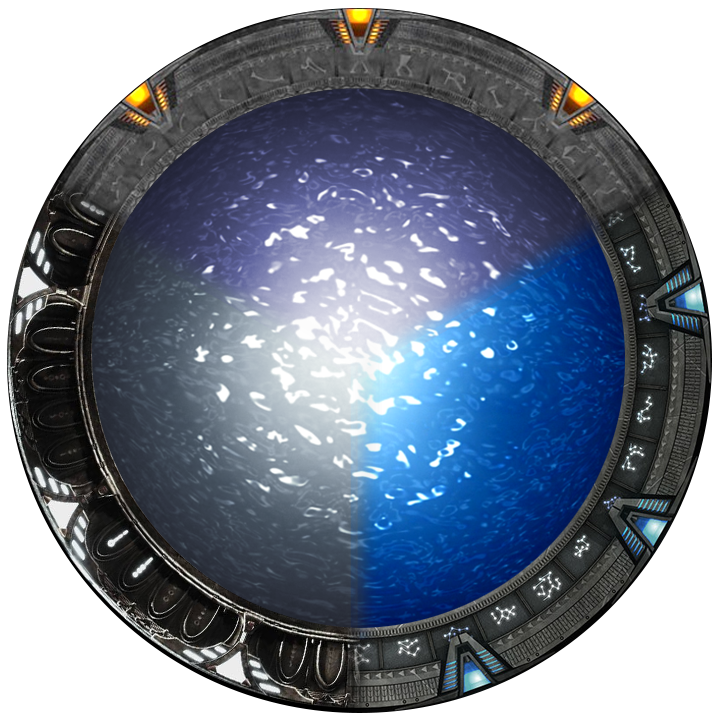If you had a machine that created a window through which you could see the future, and in the future you wrote down the winning lottery numbers and relayed that information to your present self before that lottery number was drawn.
However, in your present selfs excitement, you turn off the machine before your future self wrote the winning lottery numbers into it for your past self.
What would happen?
I would just turn the machine back on and wait longer.
I don’t think you’ve thought through your question. The machine was open in both time periods. The machine was turned off after the information was given. There’s nothing more to happen.
I get what you’re trying to say, but it doesn’t really apply to the scenario you are describing.
I saw a better version of what you are attempting to present: a scientist has a button that transports an object back in time by 5 seconds. An apple is tested successfully, it appears 5 seconds before he pushes the button and when he pushes the button the original disappears. They try it with a live mouse but something goes wrong; when it appears it’s horribly disfigured and this scares the scientist who pulls away from pushing the button. The mouse has already appeared but he will not press the button. Now what happens?
Looks like somebody has read the long jaunt by Stephen King
Actually that was from Das Jesus Video (aka The Hunt for the Hidden Relic)
That’s cool, if you find that interesting you should also check out that short story by Stephen King, I love a good horror story butI’m not easily scared but this one is actually scary
First of all this is not a paradox, unless you’re not explaining something, there are two yous past and future, if past self turns off the machine before seeing the numbers nothing happened, if he turns it off afterwards the information has already been transferred so nothing happens either.
I have a feeling you might have recently watched Primer and are thinking of a similar working tome machine, where the machine needs to be powered on from past until future. But if this situation happened in Primer it wouldn’t be a problem either because you’re not in the box after you leave it. It’s a bit weird, but if you imagine time as horizontal lines, the box allows you to travel diagonally, so you only exist inside the box in that timeline at the moment of exiting, before that you were in a different timeline, so if you exit the box, wait a while and turn it off you’re only preventing yourself from using the box again. In fact that’s one of the big reveals of the movie, except it’s said in passing by mentioning that the boxes are multi-use.
I have watched this movie many times and I just bought it on Apple TV because it was five dollars, I can’t wait to not understand again
This is fundamentally a variation on the question of a Temporal Paradox, also known as a Grandfather Paradox (“You go back in time and kill your grandfather. What happens?”). Although no killing happens in this variation, the basic idea is the same: Information is transmitted to the past from the future, but results in a situation where it cannot be transmitted in the first place.
Accordingly, there are several hypotheses to cover this. This isn’t even all of them:
- The closed loop theory: To maintain the loop, you will in the future build a time machine which will allow you to activate the machine in the past, maintaining the loop. Past you may even be unaware it was activated from the future.
- The Parallel Universe theory: When future-you sent information into the past, they did not send it into their own past but rather into a universe in which you do not send the information back in the first place.
- The Timelike Curve theory: Because there is no common reference frame for “time”, each quanta of “you” is experiencing a different reference frame. The historic light cone of your future self sending the information back exists, and if you could follow those photons backwards you would find him doing this. But future you, in your frame of reference, will never see the machine activate.
- The Emergent Time theory: Time is not a linear path, but a function of entropy. By inverting entropy, you have caused a reconfiguration of the universe into a version in which the machine is inactive.
I’m more of an Emergent Time/Timeline Curve theory guy. The others are cool for sci-fi and stuff but I just can’t conceive of that being how it works.
Closed Loop Theory seems like too cheeky of an explanation. It’s basically a bait and switch. Like: “What if you did thing? But then DIDN’T do thing!” with the answer being “actually you did but just later”. To be fair though isn’t the theory really just saying the universe will correct itself somehow?
Also since you seem knowledgeable on this, something I’ve always wondered about: is their any theory centered around our frame of reference having a past but not a future? As in we’re blazing the trail forward like an ice breaker ship for everyone else to follow? There’s probably a million fundamental laws of the universe that makes that impossible.
Sorry, I’m not very smart, but I do kinda love this stuff.
Disclaimer, I am not a physicist, just a guy with interest in sci-fi, science, and too much free time.
is their any theory centered around our frame of reference having a past but not a future?
So, the answer is, yes, this is actually kind of a common theory on how time actually works. Maybe.
This has to do with physics, and the fact that no two observers have the same perfect frame of reference. For most of us humans, our frames of reference are close enough to be identical on a day-to-day basis. It’s even close enough for (most) science. But it’s not true on a perfect level. For instance, special relativity says that time passes differently for objects in motion; GPS satellites have to correct for the fact that their onboard clocks are experience “slower” time than us observers on Earth. Even astronauts “lose” about ~1/100th of a second for every year spent on the ISS.
What’s this got to do with the future not existing, though?
So we know no two observers have a perfectly identical frame of reference - there is no objective “truth” of when something occurred. Cool. Now what? Well, what we can talk about is historic light cones. Because the speed of light in a vacuum is a universal constant, we can determine how far from you a photon departing your actions would travel. Places that photon would reach at any given point in time following your action are said to be within your historic light cone, and in common parlance, the past. The boundary of how far that photon is reaching at any given moment is, from your frame of reference, “the present”. But since nothing can exceed the speed of light, it is impossible for an observer to view beyond the present, into the future.
The catch, of course, is reference frames. You used a plural - “our frame of reference”, “we’re blazing a trail forward” - but the reality is that each of us has a minutely different reference frame and is blazing a minutely different trail. Again, for almost any day-to-day purposes this is irrelevant… but there are certain scientific experiments which exploit or even rely on this absence of reference frame.
Cool, what about time travel again?
In my first comment above, I mentioned something called closed timelike curves. Those are an actual thing: By severely bending spacetime, you can theoretically cause a photon to “curve” around and end up at the same point in time it was produced, now in its subjective past, while mathematically not violating quantum physics.
This is where things get kind of freaky and headachy; if a photon can be sent into its subjective past, doesn’t that imply a future now existing, in which that photon will be generated? The answer is, not in the frame of reference of that particular photon. A historic light cone of that photon being generated, now in that photon’s future, still exists; but that photon is now generating a new, detached lightcone…
Like I said, headachy. I also have to emphasize that while the math holds up, there’s ample reason to believe CTCs don’t exist, chief among them that our mathematical understanding of quantum physics may still be imperfect.
tl;dr: Yes, absence of reference frames means that each distinct observer is blazing their own trail, which spreads into the “past” at the speed of light. The future, exceeding the speed of light, is unobservable. This framework does provide a mathematical concept of how you could send something into your subjective past, but such a means is still theoretical at best.
That was fascinating to read, thank you!
What would happen is entirely your responsibility as the author of the scenario.
Some options may be more “realistic” than others, but since the existence of a working time machine is already beyond what seems to be feasible physics (requiring ridiculous amounts and density of negative energy for example, where not even any has been shown to be possible to make) the scenario becomes soft sci-fi, or in other words magic, and that means it’s up to the writer to make up the rules.
Here is a post I found with many of the options you can choose from.
You can kinda see this play out in the short story by Ted Chiang called The Merchant and the Alchemist’s Gate.
You’d still be poor.
Fml





